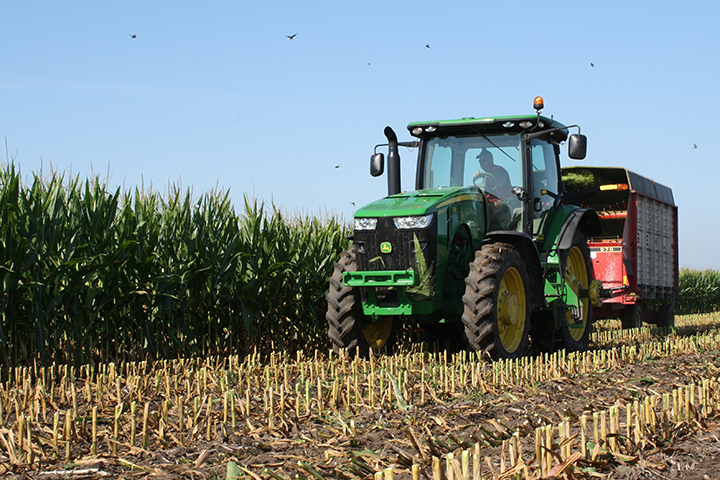It’s been a trying year for Midwest farms, and Illinois State’s University Farm is no exception.
The drought has ravaged crops in Illinois and elsewhere. Normal saw only about 4.9 inches of rain this summer through August 15, less than half the 9.9-inch average rainfall for this time of year.
The missing rain presents some unique challenges for University Farm near Lexington, which supports teaching, research, and outreach activities and is staffed by eight full-time employees and between six and 12 student assistants. The farm has about 600 acres between two locations, typically selling off its soybean crop but using its corn to feed hundreds of cows, swine and sheep on the grounds.
“We have to be relatively self-sustaining, much like a normal farm would be,” said University Farm manager Russ Derango ’77. “It’s gonna be a tough year.”
That’s because the drought has done a number on University Farm’s 350 acres of corn. Typically, crews will grind up the full cornstalks from a portion of those 350 acres into what’s called silage, which is used to feed beef cattle and sheep because it’s high in energy and digestibility.
But because the cornstalks today are only 5 feet tall, instead of 8 feet, they have to chew up more acreage to fill their silage storage units. (As of last week, two bunker silos that are usually full were only half full, and they were still short about one and a half upright silos worth of silage.)
That leaves less acreage to run through the combine to harvest traditional grain, which is also used for animal feed for University Farm’s livestock. The farm averaged about 180 bushels an acre over the past five years. But this year, with the drought, they’ll be lucky to get 100 bushels, Derango said.
So University Farm will likely have to buy more grain from neighboring farmers to make due, at a time when the drought has raised prices sky high. (At a traditional crop-livestock combined operation, they could cut down on the number of livestock to reduce feed costs, but many of Illinois State’s animals are there for research purposes, so they can’t be offloaded so easily.)
On a positive note, the farm’s soybeans will sell for higher prices too, Derango said. But because the farm also buys soybean meal for its hogs, he said, it’s paying more for that too.
“It’s off the charts,” Derango said.
The drought could have a silver lining for students. Department of Agriculture classes in farm management and agriculture policy will touch on issues related to the drought, said J. Randy Winter, a professor in the Department of Agriculture’s Agribusiness faculty.
Derango said there’s not a lot Mother Nature can do for this year’s corn crop, though the beans could benefit from a few good rains. For now, he’s just hoping for moisture to help out in 2013.
Are you a farmer yourself, or have you been impacted by the drought? Post in the Comments below.
Ryan Denham can be reached at rmdenha@ilstu.edu.

